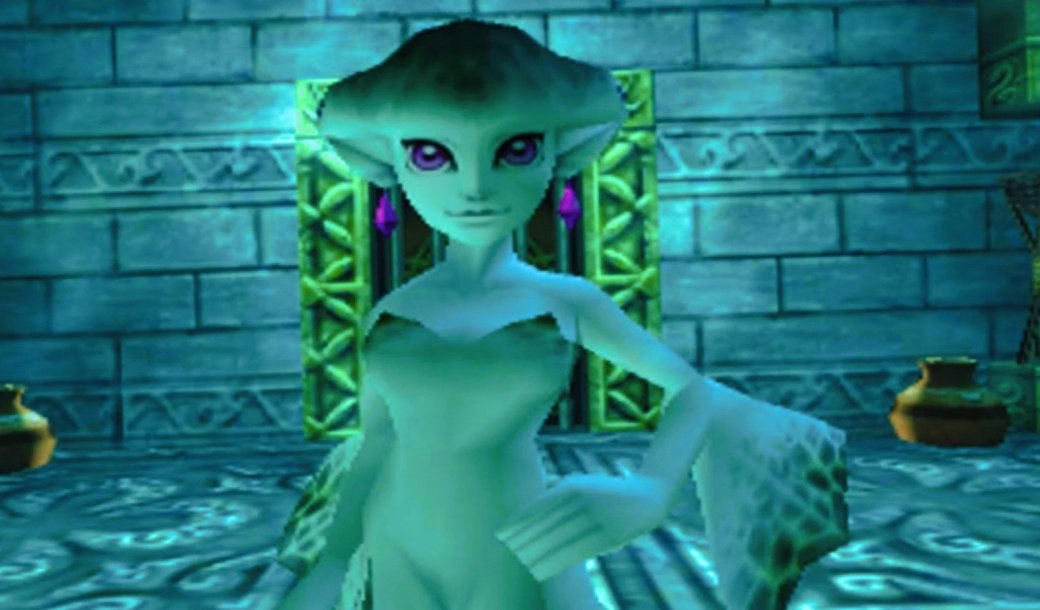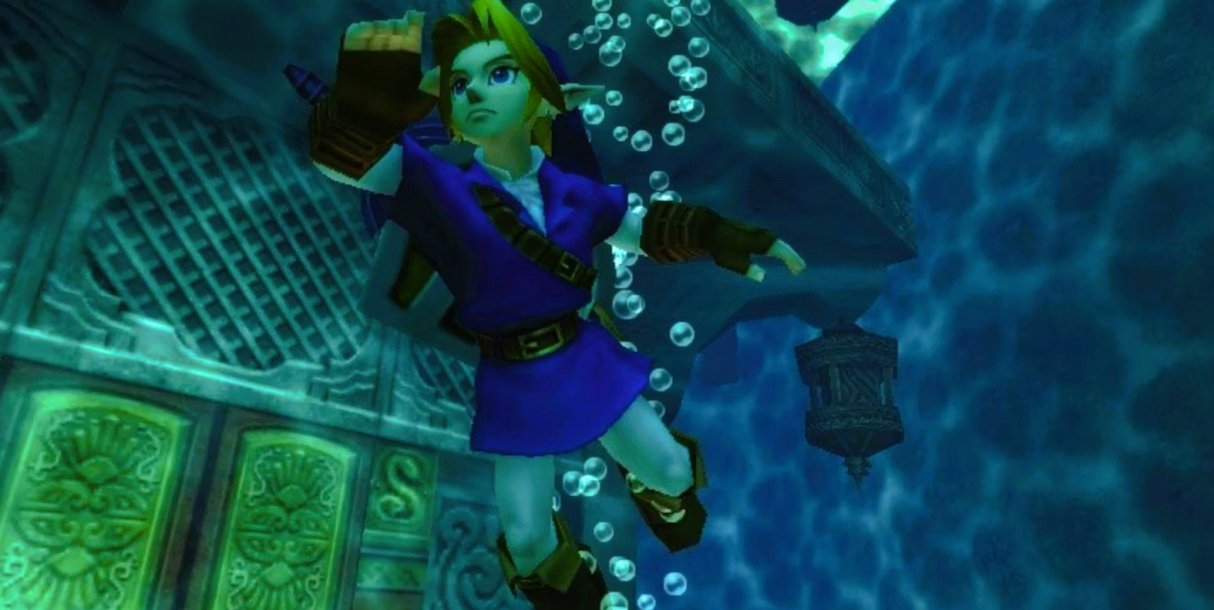The Legend of Zelda series has evolved over the years, shifting from a simpler formula of finding dungeons and defeating Ganondorf to more complex, open-world adventures. However, 25 years ago, The Legend of Zelda: Ocarina of Time, released on the Nintendo 64, epitomized the classic formula with its iconic dungeons.
 Ocarina of Time stands out as one of the most renowned adventure games, celebrated for its complete package of distinct graphics, charming Hyrule setting, catchy score, and instantly recognizable characters. The game's success is attributed to its gameplay, which provided players with significant freedom within the late '90s video game standards, ensuring its status as a classic.
Ocarina of Time stands out as one of the most renowned adventure games, celebrated for its complete package of distinct graphics, charming Hyrule setting, catchy score, and instantly recognizable characters. The game's success is attributed to its gameplay, which provided players with significant freedom within the late '90s video game standards, ensuring its status as a classic.
While the dungeons in Ocarina of Time are generally spectacular, one, in particular, has gained infamy over the years—the Water Temple. Despite the Great Deku Tree serving as a beautiful tutorial level, the Shadow Temple offering a perfect dose of eerie ambiance, and the Forest Temple reinventing the game midway through with puzzles and new enemies, the Water Temple stands out as a challenging and memorable experience for players.

The Water Temple in The Legend of Zelda: Ocarina of Time quickly becomes a tedious and challenging section of the game. Its traversal involves raising and lowering water levels and using the Iron Boots, which allow walking underwater but significantly slow movement. Link's limited swimming ability contributes to the level's pacing issues.
While the director, Eiji Aonuma, drew inspiration from his love of sea diving for the temple's design, the gameplay fails to capture this inspiration. Instead, the Water Temple serves as a reminder that players are engaged in a game. Constantly switching in and out of the inventory to equip or remove the Iron Boots disrupts the rhythm that felt inherent in other areas of Hyrule, shaking players loose from Ocarina of Time's immersive illusion. While the game generally allows players to get lost in its massive, explorable world, the Water Temple disrupts this experience, acting as a reminder of reality.
Despite its frustrating gameplay, the Water Temple features a visually entrancing design and a moody color palette. Koji Kondo's enigmatic score adds to the atmosphere, standing out as some of his best work in the game. However, these positive elements are not enough to salvage the overall frustrating experience of the Water Temple.

The backlash against the Water Temple in Ocarina of Time stood out prominently amid the game's great reviews and subsequent legacy. In response, Nintendo addressed the criticisms in re-releases, with Eiji Aonuma expressing regret over the annoying features and actively working on improvements. The release of Ocarina of Time 3D for the Nintendo 3DS aimed to rectify the Water Temple experience, simplifying actions such as equipping items like the Iron Boots by placing them on the lower touch screen for immediate access.
Despite the Water Temple's rough reputation, the enduring significance of the original Ocarina of Time and its ties to its mega-popular release on the Nintendo 64 suggest that its infamy will persist as long as there are Zelda games to play. However, the passing of twenty-five years has transformed Ocarina of Time from a revolutionary title into one of the medium's finest achievements, demonstrating resilience against even the pesky challenges posed by the Water Temple.
 Ocarina of Time stands out as one of the most renowned adventure games, celebrated for its complete package of distinct graphics, charming Hyrule setting, catchy score, and instantly recognizable characters. The game's success is attributed to its gameplay, which provided players with significant freedom within the late '90s video game standards, ensuring its status as a classic.
Ocarina of Time stands out as one of the most renowned adventure games, celebrated for its complete package of distinct graphics, charming Hyrule setting, catchy score, and instantly recognizable characters. The game's success is attributed to its gameplay, which provided players with significant freedom within the late '90s video game standards, ensuring its status as a classic.While the dungeons in Ocarina of Time are generally spectacular, one, in particular, has gained infamy over the years—the Water Temple. Despite the Great Deku Tree serving as a beautiful tutorial level, the Shadow Temple offering a perfect dose of eerie ambiance, and the Forest Temple reinventing the game midway through with puzzles and new enemies, the Water Temple stands out as a challenging and memorable experience for players.

The Water Temple in The Legend of Zelda: Ocarina of Time quickly becomes a tedious and challenging section of the game. Its traversal involves raising and lowering water levels and using the Iron Boots, which allow walking underwater but significantly slow movement. Link's limited swimming ability contributes to the level's pacing issues.
While the director, Eiji Aonuma, drew inspiration from his love of sea diving for the temple's design, the gameplay fails to capture this inspiration. Instead, the Water Temple serves as a reminder that players are engaged in a game. Constantly switching in and out of the inventory to equip or remove the Iron Boots disrupts the rhythm that felt inherent in other areas of Hyrule, shaking players loose from Ocarina of Time's immersive illusion. While the game generally allows players to get lost in its massive, explorable world, the Water Temple disrupts this experience, acting as a reminder of reality.
Despite its frustrating gameplay, the Water Temple features a visually entrancing design and a moody color palette. Koji Kondo's enigmatic score adds to the atmosphere, standing out as some of his best work in the game. However, these positive elements are not enough to salvage the overall frustrating experience of the Water Temple.

The backlash against the Water Temple in Ocarina of Time stood out prominently amid the game's great reviews and subsequent legacy. In response, Nintendo addressed the criticisms in re-releases, with Eiji Aonuma expressing regret over the annoying features and actively working on improvements. The release of Ocarina of Time 3D for the Nintendo 3DS aimed to rectify the Water Temple experience, simplifying actions such as equipping items like the Iron Boots by placing them on the lower touch screen for immediate access.
Despite the Water Temple's rough reputation, the enduring significance of the original Ocarina of Time and its ties to its mega-popular release on the Nintendo 64 suggest that its infamy will persist as long as there are Zelda games to play. However, the passing of twenty-five years has transformed Ocarina of Time from a revolutionary title into one of the medium's finest achievements, demonstrating resilience against even the pesky challenges posed by the Water Temple.
